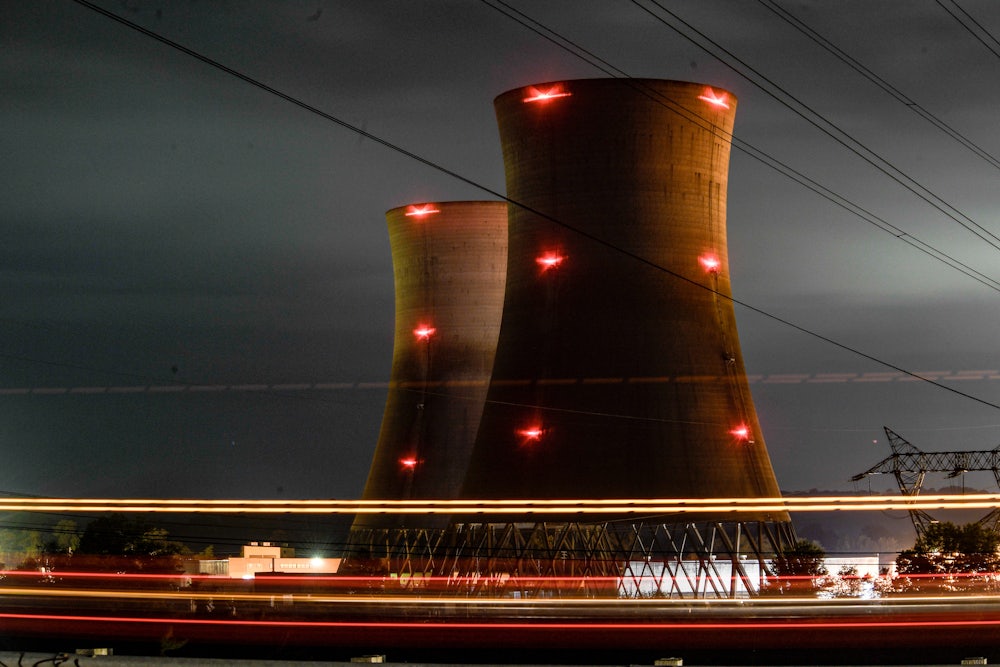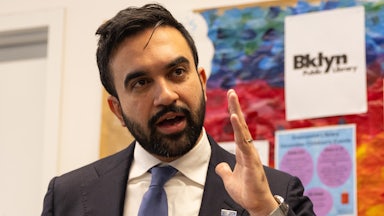Microsoft has long wanted to power the A.I. future with nuclear fission, and has hinted at plans to be at the forefront of this technology. A.I. data centers are notorious power-hogs, their electrical demand projected to grow 160 percent by 2030. But nuclear energy, Microsoft suggested, might offer a way out of this problem. Last year, the tech giant posted a job ad seeking a manager with at least six years of experience in the nuclear energy industry for a role leading “all aspects of energy infrastructure for global growth.” What hi-tech magic did Microsoft have up its sleeve? Was it about to crack the code and roll out the long-awaited series of small modular reactors that have been touted for years with “let’s get real” smugness by activists like Michael Shellenberger as the only way to cut greenhouse gases and still meet the world’s energy needs? Would Microsoft’s “AI for Good” team, supposedly “working to accelerate solutions and develop climate resilience with AI,” somehow find the silver bullet?
Now, almost exactly a year later, Microsoft has finally announced at least one part of what this energy plan actually is: to reopen America’s most cursed nuclear generating station, Three Mile Island. Microsoft and Baltimore’s Constellation Energy will bring the shuttered 835 megawatt Three Mile Island Unit 1 back online after five years out of service. Unit 1 is not, it should be noted, the same unit that melted down in 1979 in America’s worst and most notorious commercial nuclear accident. That would be unit 2—which will remain closed. The enterprise will be renamed “Crane Clean Energy Center.”
In a sane world, this farce should mark the end of the romance between Big Tech and nuclear power. But that is not the world we live in.
The site OilPrice.com was impressed by the plan, praising it as a “breakthrough” not so much in energy but finance. Typically, nuclear projects involve massive federal loans and subsidies, but despite the $1.6 billion Constellation will need to get the unit cooking again, this project appears to be bankrolled entirely by Microsoft. “Unlike typical regulated utility investments where the public ultimately pays, this transaction involves no public funds or support at all. This is a transaction solely between Constellation’s non-regulated energy subsidiary and Microsoft,” Crude Oil Prices Today wrote.
But the project will almost certainly need more money in the future. “The $1.6 billion is just the start,” Stanford professor of civil and environmental engineering Mark Jacobson told me. “Microsoft will be asking for government handouts just like most all other aged nuclear reactor owners have asked in multiple states.”
When reached for comment on the likelihood of subsidies being involved, a P.R. representative speaking on behalf Microsoft, Ben Wilsker, reiterated that Constellation Energy is the owner, not Microsoft, but didn’t comment on the subsidies.
Jacobson is skeptical about nuclear energy’s usefulness for meeting A.I.’s energy demands. “Microsoft is far better off investing in real solutions: solar photovoltaics, onshore wind, offshore wind, batteries, and geothermal electricity,” he said. “But Bill Gates is good at making bad decisions about energy, and investing in completely useless solutions.”
According to Wilsker, Microsoft “promotes and purchases” grid energy, including “wind, solar, hydropower, nuclear, and green hydrogen.” It’s not uncommon for consumers in general to purchase grid power that includes energy from renewables.
Gates, Microsoft’s co-founder, still works at the company as technology adviser to CEO Satya Nadella. He’s now also the founder of the nuclear energy company TerraPower. In June, a crowd showed up in Kemmerer, Wyoming, for the ground breaking for TerraPower’s new nuclear generating station. Gates told his Kemmerer audience that they were standing on “what will soon be the bedrock of America’s energy future.”
In theory, Kemmerer Power Station, Unit 1, is the only new U.S. nuclear generating station currently under construction. But the forward momentum implied by the groundbreaking ceremony seems to be smoke and mirrors: The reactor design has yet to be approved by the Nuclear Regulatory Commission, The New York Times reported, and this type of reactor design relies on Russian innovation.
The plant requires a special kind of fuel, according to University of British Columbia physicist M.V. Ramana—one that “they were originally hoping to import from Russia,” Ramana told me. “But those plans fell through after Russia invaded Ukraine,” he said. In other words, offices and parking lots can be built in Kemmerer, but the crucial reactor at the station’s center is on hold until some other enriched uranium supplier can ship commercial quantities of viable fuel, and there’s no word on when that will be.
Andy Hallmark, a communications representative at TerraPower, confirmed to me that the ground breaking in June was for the “nonnuclear sections of the plant.” TerraPower’s view is that the necessary fuel will become available because “other global suppliers are expected to develop similar capacity as demand grows,” and that his company is “confident in securing a solution for our plant, which is why we remain on schedule with its construction.”
Microsoft owns power-hungry data centers in Wyoming, and the company’s angst about the carbon footprint of those data centers is well documented. As of 2013, it powered at least one with waste methane given off by a local water treatment facility, and in 2021, it announced grants to local environmentalists as it built more, along with promises that they’re “built with sustainability top of mind.”
It’s hard not to feel, however, that the company is now entering the realm of self-satire. For example, if I were writing a darkly comedic prestige drama about Microsoft’s efforts to green up, even as its A.I. ambitions cause its energy needs to spike, I might worry that having the company sell A.I. products to ExxonMobil and Chevron designed to help find new oil and gas deposits would be, while delightfully nefarious, too implausible. Amazingly, Microsoft is actually doing this. Still, after Bill Gates’s nuclear power project went off the rails, I would resist the temptation to have my CEO character say, “Fuck it! Let’s reopen Three Mile Island.” That would be downright hacky.
Yet by 2028, pending regulatory approval, Three Mile Island will be back online. The people of Pennsylvania will reportedly receive their share of what Constellation claims will be $3 billion in state and federal taxes.
An average climate-concerned person, hoping nuclear energy might offset some of their carbon footprint, has probably been looking for hopeful messages about nuclear for years. Alas, this latest headline is far from it. Microsoft’s message is: “Low-carbon energy for me, not for thee, but you’re welcome for Copilot, now available on Windows 11.” It’s an energy plan so gut-wrenchingly bleak, one can’t help but wonder if one of Microsoft’s “AI for Good” chatbots really did come up with it.









